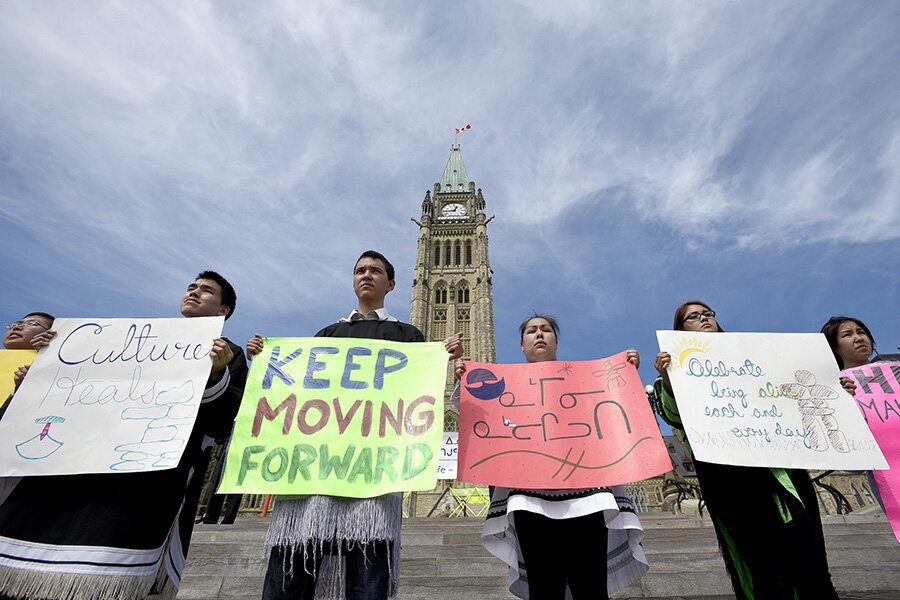Native, proud, and alive: Tribes turn to social media to combat teen suicide
“We need you here.”
Those words ache for anyone who has had a loved one consider suicide or self-harm, but especially so for native American tribes, where rates of teen suicide are double to triple the national average. Whereas 16 percent of American teens have considered suicide in the past year, the same number of native youth actually attempted it, causing even further suffering in communities that are already among the country’s most marginalized and impoverished.
On Friday, the Associated Press reported from Hooper Bay, Alaska, where a bevy of mental health groups rushed to treat a native community reeling from a spate of connected suicides, with one young man’s death seemingly inspiring the next suicide, and then another.
Researchers and counselors are increasingly focused on suicide clusters, as they’re called, representing a shift in thinking on prevention and treatment. The image of a person at risk for self-harm is often the loner, the isolated teen who feels alone and misunderstood, but social networks and relationships can play a huge role in teens’ life-or-death decisions.
As Stacy Teicher Khadaroo has reported for The Christian Science Monitor, suicide is now recognized as “contagious”: even two years afterwards, friends of a teen who killed himself are considered dangerously likely to make the same choice. The good news: “Prevention is contagious, too.”
That’s why native communities are turning to social media campaigns like #WeNeedYouHere, trying to raise awareness that the pain experienced at the death of a loved one, especially the confusion and guilt survivors may feel when friends or siblings take their own lives, is not forever. It's always possible to make a different choice.
But standard prevention efforts may not be enough for teens whose daily lives are shaped by an overwhelming history of discrimination and isolation: According to the Aspen Institute, which has partnered with the White House to support native youth, roughly one quarter of native Americans live in poverty, and only half of teens complete high school – a drop-out rate double the national average. Health crises, from alcoholism to tuberculosis, are far more rampant on reservations than elsewhere.
Native youth are twice as likely to be abused, or die before 24, Tulalip Tribal Court (WA State) Judge Theresa M. Pouley told The Washington Post in 2014, adding “Their experience with post-traumatic stress disorder rivals the rates of returning veterans from Afghanistan.”
Until the 1970s, tens of thousands of native children were removed from home and educated in boarding schools that taught cultural assimilation as much as an academic curriculum, instilling shame and confusion about which identities they should embrace. But today’s suicide prevention activists are intent on restoring a sense of cultural belonging and pride that they say is key to teens’ well-being.
We R Native, a web resource touching on all aspects of teen health, is leading the way. Simply breaking the silence on an often-taboo topic is a step forward: Survivors step forward to share their experiences in videos like “I’m Still Here.”
“I draw strength from my heritage,” one young woman tells the camera. We R Native’s prevention ambassador Jo-E-Dee also encourages teens dealing with suicide in their community to turn to cultural traditions for support: Canoe journeys and pow-wows were part of her own journey back to health after her brother’s death.
The community emphasis is unmistakable: “We Are Connected,” one campaign poster assures teens. “My story has just begun,” one teen’s sign says, while next to her, a man’s poster reminds them, “You are a gift from the creator. You will pass on our traditions.”
Research backs up a culturally relevant approach, combining standard mental health care with solutions tailored to each tribe. A suicide prevention guide for native communities, published by the US Department of Health and Human Services, tells counselors that “the need to honor and respect Native culture ... cannot be overemphasized.”
It’s the approach experts plan to put into action in Alaska this week. “It’s all about relationships,” coordinator James Gallanos told the Associated Press.







